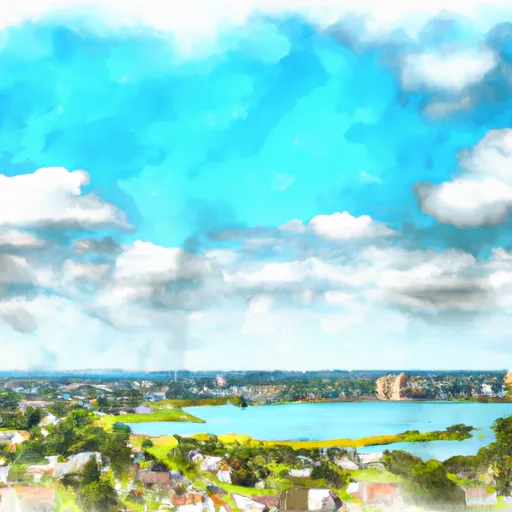°F
°F
mph
Windspeed
%
Humidity











Twin Lakes, located in southeastern Wisconsin, is a charming village known for its natural beauty and recreational opportunities. The climate in Twin Lakes is characterized by four distinct seasons. Summers are warm and humid, with temperatures ranging from the mid-70s to mid-80s Fahrenheit. Winters are cold, with temperatures often dropping below freezing, and the area receives ample snowfall, making it ideal for winter sports enthusiasts.
The village is surrounded by two lakes, Lake Mary and Lake Elizabeth, which make up the primary hydrology constituents of Twin Lakes. These interconnected lakes provide opportunities for various water-based activities, such as boating, fishing, and swimming. Lake Mary is known for its excellent fishing, including species such as walleye, bass, and panfish.
Outdoor recreation is abundant in Twin Lakes. The area offers numerous hiking and biking trails, enabling visitors to explore the scenic landscapes, including woods, wetlands, and prairies. Golf enthusiasts can enjoy a round of golf at the Twin Lakes Country Club, offering a challenging course with beautiful views.
In conclusion, Twin Lakes, Wisconsin, offers a pleasant climate, with distinct seasons and ample opportunities for outdoor recreation. The interconnected lakes and surrounding natural areas provide a variety of water-based and land-based activities for visitors to enjoy.
Weather Forecast
Twin-Lakes receives approximately 901mm of rain per year, with humidity levels near 80% and air temperatures averaging around 9°C. Twin-Lakes has a plant hardyness factor of 5, meaning plants and agriculture in this region thrive during a short period during spring and early summer. Most plants will die off during the colder winter months.
Regional Streamflow Levels
101
Cubic Feet Per Second
17
Cubic Feet Per Second
3
Cubic Feet Per Second
23
Cubic Feet Per Second
Nearby Camping
| Camping Area | Reservations | Toilets | Showers |
|---|---|---|---|
| Fox Ridge State Park | |||
| Beech Bend | |||
| Paris Landing State Park | |||
| Sam Parr State Park | |||
| Gibson City Park | |||
| Desplaines Conservational Park |



